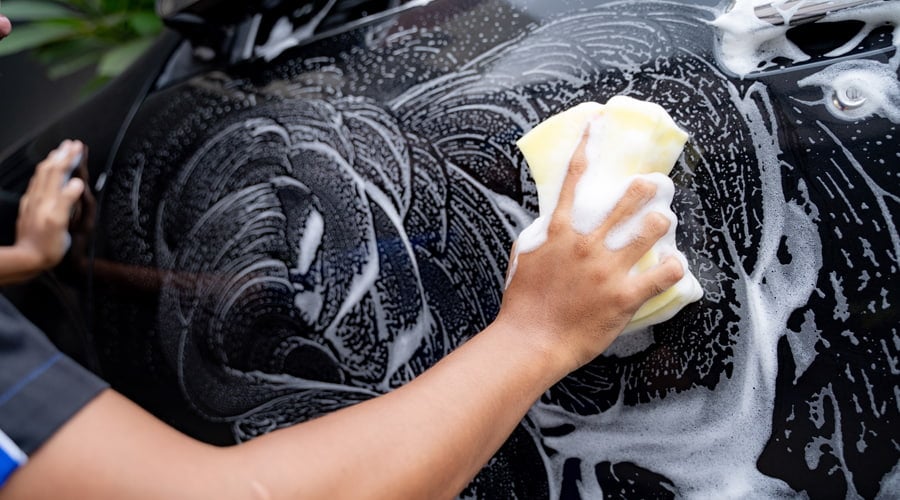
Once in a while, car owners may decide to wash their car at home instead going to the local car wash. As with all cleaning activities, it can be time-consuming but one does get a certain sense of achievement or accomplishment in bringing back the sparkle of their ride.
Washing your car manually will re-acquaint you to your car and will give you an opportunity to see how well the car is “aging”. It will also familiarize yourself with the latest dings and dents so that you can act on them before they become major issues.
As simple as washing your car may seem, there are a few things to watch out for so that you don’t accidentally scratch or mar the finish.
1 – Preparation
Before you start on your quest, make sure you have all your equipment and supplies with you. You do not want to stop mid-wash when you realize that you are missing a tool or certain product.
Equipment
Most typical washes will require the following equipment and supplies:
- Water Hose – To get rid of any large debris and prevent potential scratching as well as rinse off any soap/product. Very efficient for dislodging dirt in between cracks and crevices as well as parts of the undercarriage.
- Sponges (or Mitts) – Several – To rub or lather the body of the car and well as apply any car shampoo or wax
- Gloves – This may be necessary to protect your hands if applying car products with harsh chemicals.
- Microfibre/Chamois Towels – Perfect for drying the car off or for wiping off product residue.
- Buckets – One for water and the other to rinse out your sponges/mitts.
- Cleaning Products: Use dedicated car-wash products as these as specifically formulated for car paint. Regular household cleaning agents (detergent, soap) may damage the paint job.
- Optional – Having a car pressure washer can certainly speed things up when rinsing.
- Optional – To speed up the drying process, a squeegee with soft rubber to remove excess water after rinsing off the soap.
Environment
Try washing your car in the shade or rather avoid washing your car when it is in direct sunlight.The heat will dry off the car faster than you can work and you may end up with water spots or residue deposits all over the car body.
2- Where to start
It is best to wash the car section by section. Start off with the roof and work your way down. This prevents having to re-washing the same sections of the car in case of soap or water drips.
3 – First Rinse
Before you attack the car with soap, use the hose to rinse the car thoroughly to wash off any dust or dislodge any large dirt particles. This will remove any debris that can cause scratches. Having a car pressure washer can really help at this stage by power washing all the particles away.
4 – Sponging
When sponging, move the sponge lengthwise across the hood and other body panels. Do NOT sponge in circles as this will create light swirl marks. Also if the sponge fall to the ground, wash it properly to remove any particles which may cause scratches.
The wheels of the car are exposed to the most dirt and grime and should get extra attention. Make sure to use a different cleaning sponge for the wheels from the rest of the car otherwise you may end up transferring oily grime onto the body of the car the next time you wash you car.
5 – Rinsing
This is where you get all the soap and lather off the car. If you are using a hose, use one without a nozzle so that the water flows down gently in a continuous sheet of water.
6 – Drying the Car
You can use a soft squeegee to remove most of the excess water once the car has been rinsed. This will speed up the drying process. Use the microfibre or chamois towels to dry the car. It is best to “blot” up the water instead of scrubbing. Avoid letting the car “air dry” as it will leave mineral residue or watermarks. Driving around will also not do a good job of drying the car properly.
7 – Clean Up
Once you are done, make sure to wash all the sponges and microfibre towels. Clean out and rinse out all the buckets to ensure that they are ready for use again.
Stow all your equipment and supplies in a safe place, away from young children and pets. Make a note of all the supplies you will need to replenish or re-stock for the next wash.
